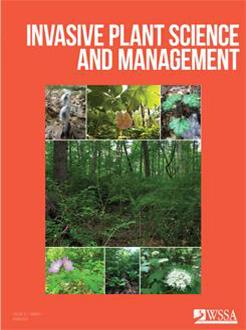Essential variables to consider for an efficient control strategy for invasive plants include dispersion pattern (i.e., satellite or invasion front) and patch expansion rate. These variables were demonstrated for buffelgrass [Pennisetum ciliare (L.) Link], a C4 perennial grass introduced from Africa, which has invaded broadly around the world. The study site was along a roadway in southern Arizona (USA). The P. ciliare plant distributions show the pattern of clumping associated with the satellite (nascent foci) colonization pattern (average nearest neighbor test, z-score –47.2, P < 0.01). The distance between patches ranged from 0.743 to 12.8 km, with an average distance between patches of 5.6 km. Median patch expansion rate was 271% over the 3-yr monitoring period versus 136% found in other studies of established P. ciliare patches. Targeting P. ciliare satellite patches as a control strategy may exponentially reduce the areal doubling time, while targeting the largest patches may have less effect on the invasion speed.
How to translate text using browser tools
15 May 2019
Satellite patches, patch expansion, and doubling time as decision metrics for invasion control: Pennisetum ciliare expansion in southwestern Arizona
Jaron D. Weston,
Mitchel P. McClaran,
Richard K. Whittle,
Christian W. Black,
Jeffrey S. Fehmi
ACCESS THE FULL ARTICLE
Clustered pattern
invasive species
management strategy
Seed dispersion
Sonoran Desert





